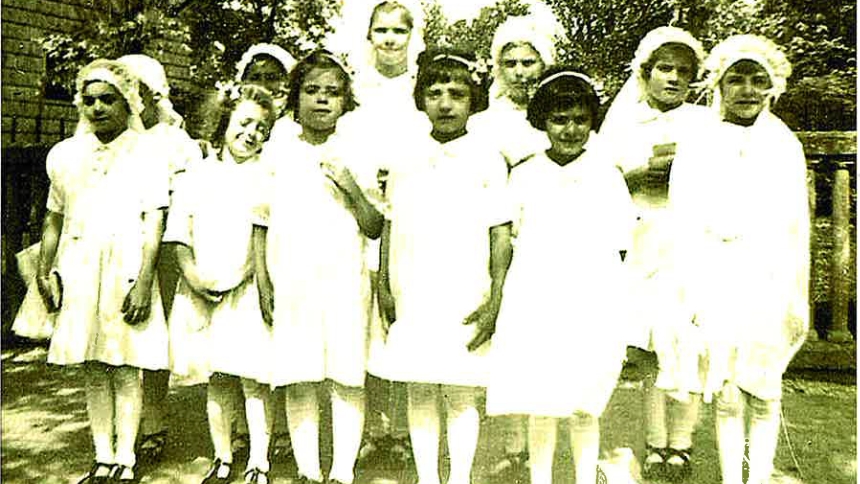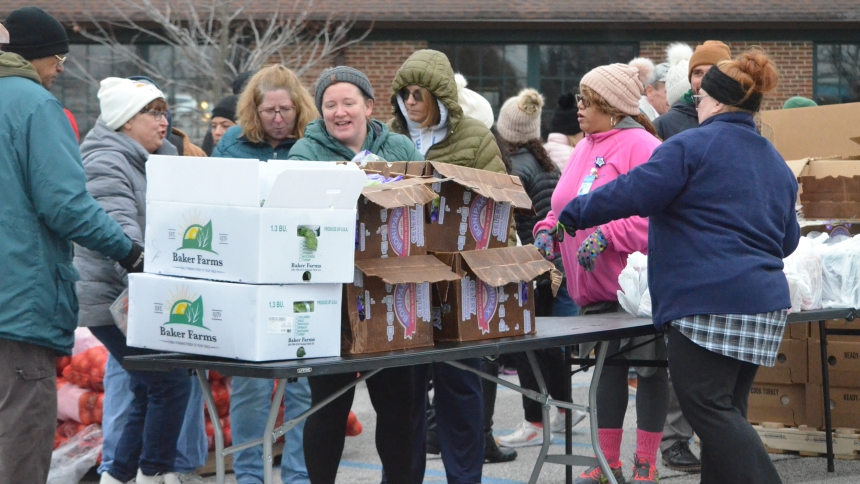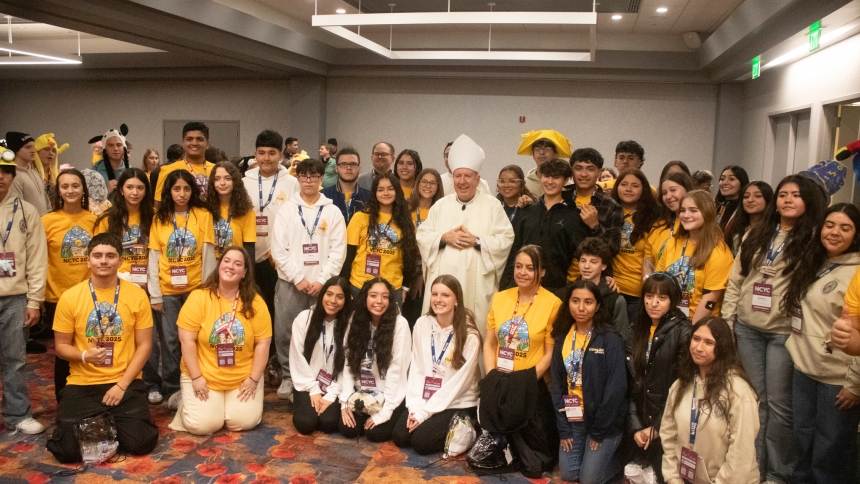
“I shall not die before Servants of the Divine Heart are spread all over the world.” – Mary Mother Teresa of St. Joseph
EAST CHICAGO – The story of Carmelite Daughters of the Divine Heart of Jesus in Northwest Indiana cannot be told without mentioning the dedication of the sisters or the generous support they received from many in the community. While talking about the early years leading up to the establishment of the St. Joseph Carmelite Home, the sisters today speak lovingly of their foundress – Blessed Maria Teresa.
Blessed Maria Teresa of Saint Joseph, born Anna Maria Tauscher van den Bosch, was a German religious sister who founded the Carmelite Daughters of the Divine Heart of Jesus in July 1891.
With a desire to help the homeless, she traveled to America in 1912 eager to continue spreading her mission of establishing homes for children, as she had done throughout Europe. After visiting the Diocese of Cleveland and the Diocese of Milwaukee, she arrived in Northwest Indiana in 1913. The region was part of the Diocese of Fort Wayne at the time and Bishop Herman J. Alerding guided her to East Chicago, where he felt her ministry would be greatly needed.
“Our Mother Foundress came from Europe, and it was really a difficult time in the world because it was the beginning of WWI,” explained Sister Maria Giuseppe Moxley. “After she opened the home, the war broke out, so the sisters who came over were stranded. There was no way of getting back to their country.”
According to Sister Giuseppe, the sisters heard there was a new neighborhood starting (East Chicago) and Sister Maria Teresa thought there were a lot of souls she could save and work with there. And of course, her main mission was to take care of children, so she began to search for a place they could call home.
Sister Maria Teresa then met Colonel Walter Riley who befriended her and the other sisters. The owner of a land company arranged for them to rent two small worker cottages. The first children they cared for were orphans and then they started to receive more and more children.
Sister Maria del Socorro Perez-Torrez admits she becomes emotional when she thinks about how, from the very beginning, the people in the area were very receptive and helpful to the religious sisters.
“They were poor, but they supported Mother maintaining the children’s home,” she said. “And very soon the house was full of children and the people trusted the sisters with the care of their kids. They would bring the children and trust in the good care that the sisters could provide.”
The sisters quickly assumed the parental role to approximately 70 children. Their two tiny cottages were filled, and they knew they had to expand. But how? Through the generosity of a man named Otto Kulage, who wished to donate concrete bricks he had to a worthy cause, they had enough material to build the St. Joseph’s Carmelite Home that was completed in the early 1920s.
While those first religious sisters operating the Carmelite Home did not possess any luxury items, they were fortunate to always have the bare necessities needed to keep the children happy. Benefactors emerged over time and the Carmelite Guild was created.
Many children returned throughout the years to share how they were doing and tour the updated Carmelite Home. The sisters also enjoyed hosting reunion gatherings. It was during these times, Sister Helena Marie Cabral said, that they would share stories about how those early sisters and the older children would work together to look out for the younger children.
“They did the cooking, the cleaning, sewing,” explained Sister Helena Marie Cabral. “They became good moms and housewives. They all learned to do something and became a family really.”
The home continued to grow and evolved into a group home in the 1940s. Even though the sisters had chances and opportunities to relocate from East Chicago, they never felt the need to move.
“Schererville was a woodsy area at that time,’ said Sister Giuseppe. “People said, ‘There is a new area you could go into. You don’t have to stay in East Chicago,’ but we never ever considered that all these years.”
Sister Giuseppe said part of what made it easy to stay in the same location was the succession of mayors in the city of East Chicago, along with the bishops of the Diocese of Gary, starting with Bishop Andrew G. Grutka, “who were so good to us.”
“There was just an acceptance and a warmth that we felt,” she said.
The sisters know their foundress, Mother Maria Teresa, felt that warmth, too. When she left America and headed back to Europe in 1928, she loved the area so much that she took dirt from the region with her. She founded many homes, explained Sister Giuseppe, but she requested some of the soil from East Chicago be placed in the casket with her when she died.
“The history of the sisters centers on Mother Maria Teresa of St. Joseph and the love she had for the land,” she said. “The fact that she wanted some of the soil in her tomb shows how significant it was for her, and that legacy continued on to others.”
“I think every sister that has worked in this place has loved this place,” said Sister Maria Socorro.
The early sisters called the flat land of their new home “the desert” and the train that ran through the land the “desert lion.” The nicknames were not used negatively but rather served as a symbol of the property and the joy they had for what they were able to create for the children.
“One of the hardest things about leaving is the legacy,” said Sister Giuseppe. “More than just a foundation it was a real legacy.”
She continued, “That’s what I think is so beautiful, how from the beginning, Mother, despite poverty, found the support of other people to maintain the dream home she wanted for her kids.”
Sister Maria Socorro added that Sister Maria Teresa’s spirit lives through those who continued the mission she started in “every sister that came here and has experienced the love and support of the community.”
Sister Giuseppe believes it's because of her sacrifices and “her beautiful spirit of hanging in here and giving the children everything that she could that I think God blessed us then over the years, because we now have beautiful benefactors, beautiful organization and beautiful people who have given so generously to our house. I never could ever thank them enough.”
The sisters have immense gratitude for all those who stepped up to help after a fire caused severe damage to their buildings in August 2021, and as they move on to serve in new assignments in Wisconsin, they are also thankful that Damar Services, Inc. has agreed to take ownership of the East Chicago property and will provide services for children, adolescents and adults with developmental, behavioral and intellectual disabilities.
“They have been very good to work with,” said Sister Giuseppe. “They are not Catholic, but they have a very Christian outlook.”
Caption: Girls residing at the St. Joseph Carmelite Home in East Chicago gather together for a picture in the late 1930s. (Provided photo)



